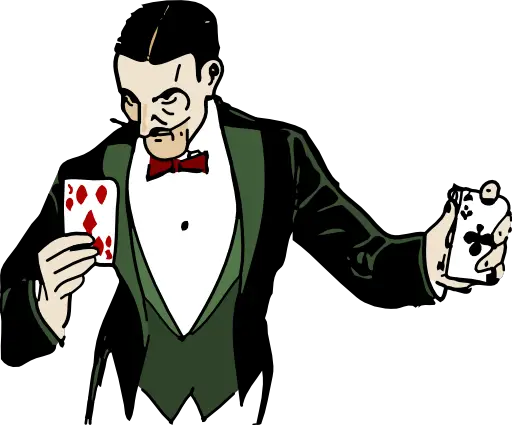Support our educational content for free when you purchase through links on our site. Learn more
Is Mentalism a Form of Magic? 10 Mind-Bending Insights to Discover! 🤯 [2024]
Have you ever watched a mentalist perform and found yourself questioning the very fabric of reality? You’re not alone! The world of mentalism is a fascinating blend of psychology, illusion, and entertainment that leaves audiences spellbound. Imagine sitting in a theater, and a performer asks you to think of a word, only to reveal it moments later—without ever having met you before! This captivating art form often leads to a burning question: Is mentalism truly a form of magic?
In this article, we’ll dive deep into the intriguing relationship between mentalism and magic, exploring their histories, techniques, and the psychological principles that underpin them. We’ll unravel the key differences that set them apart and reveal how mentalists create the illusion of mind reading. Plus, we’ll share tips for those curious about stepping into the world of mentalism themselves. So, get ready to discover the secrets behind the curtain! 🎩✨
Key Takeaways
- Mentalism and magic are distinct art forms: While both create illusions, mentalism focuses on psychological tricks, whereas magic emphasizes physical feats.
- Key techniques of mentalism include cold reading, suggestion, and observation, allowing performers to create the illusion of mind reading.
- Famous figures in both fields include renowned mentalists like Derren Brown and iconic magicians like Harry Houdini, each contributing to their respective crafts.
- Learning mentalism requires a deep understanding of psychology, observation skills, and practice in performance techniques.
- Explore magic supplies: If you’re interested in diving into the world of mentalism or magic, check out our recommended links for books on mentalism and magic supplies:
With these insights, you’ll be well-equipped to appreciate the art of mentalism and magic, whether as a spectator or a budding performer!
Table of Contents
- Quick Tips and Facts about Mentalism and Magic
- The Intriguing History of Mentalism and Magic
- What is Mentalism? Understanding the Art of Mind Reading
- What is Magic? The Illusion of the Impossible
- Key Differences Between Mentalism and Magic: What Sets Them Apart?
- The Psychology Behind Mentalism: How Do They Do It?
- Famous Mentalists vs. Magicians: Who’s Who in the World of Illusion?
- How to Get Started in Mentalism: Tips for Aspiring Mind Readers
- The Ethics of Mentalism and Magic: Is It Deception or Entertainment?
- Mentalism in Pop Culture: Movies, TV Shows, and More
- Conclusion: The Enigmatic Relationship Between Mentalism and Magic
- Recommended Links for Further Exploration
- FAQ: Your Burning Questions Answered
- Reference Links for In-Depth Reading
Quick Tips and Facts about Mentalism and Magic #quick-tips-and-facts-about-mentalism-and-magic
- Mentalism and magic, while often confused, are distinct art forms. Think of it like this: a magician might make your watch disappear 💨, while a mentalist might tell you what time you checked it last 🤔.
- Mentalism centers around the illusion of extraordinary mental abilities, such as mind reading, telekinesis, and prediction. Unlock the Secrets: 10 Mind-Blowing Ways to Do a Magic Trick with Numbers!
- Magic, on the other hand, focuses on creating seemingly impossible physical feats, like levitation, transformations, and disappearances.
- Both rely heavily on psychology, misdirection, and skillful presentation to create a captivating performance.
The Intriguing History of Mentalism and Magic #the-intriguing-history-of-mentalism-and-magic
From ancient shamans and oracles to modern-day stage performers, the human fascination with the seemingly impossible has a long and storied history.
Early Forms of Mentalism: Deception or Divine Connection?
- Ancient civilizations often attributed unexplained phenomena to supernatural forces. Individuals claiming to possess psychic abilities held significant influence.
- Think of the Oracle of Delphi in ancient Greece, whose pronouncements could sway the course of empires. Were these individuals gifted with true foresight, or were they masters of observation and manipulation? 🤔
- The lines between spiritual practices and early forms of mentalism were often blurred.
The Rise of Stage Magic and the Birth of Mentalism
- The 18th and 19th centuries saw a surge in the popularity of stage magic. Illusionists like Jean Eugène Robert-Houdin captivated audiences with their seemingly impossible feats.
- Mentalism, as a distinct branch of magic, emerged during this period. Performers began to specialize in acts that emphasized psychological illusions and mind-reading effects.
- The late 19th and early 20th centuries saw the rise of iconic mentalists like Dunninger and Hanussen. These figures pushed the boundaries of the art form, sparking debates about the nature of their abilities.
Modern Mentalism: Entertainment, Psychology, and More
- Today, mentalism continues to evolve, incorporating elements of psychology, neuroscience, and even technology.
- Modern mentalists often emphasize the scientific underpinnings of their art, explaining how principles of suggestion, influence, and perception contribute to their seemingly impossible feats.
- From stage shows to close-up performances, mentalism continues to captivate and mystify audiences worldwide.
What is Mentalism? Understanding the Art of Mind Reading #what-is-mentalism-understanding-the-art-of-mind-reading
Mentalism, often dubbed “the art of mind reading,” delves into the fascinating realm of the human mind. It’s about creating the illusion that you possess extraordinary mental abilities, such as:
- Telepathy: Seemingly transmitting or reading thoughts. Imagine revealing a word someone is thinking or a picture they’ve drawn in their mind 🤯.
- Clairvoyance: Appearing to gain information through supernatural means. This could involve revealing hidden objects or predicting future events.
- Precognition: Predicting the future. This might involve knowing the outcome of a coin toss or correctly guessing a volunteer’s choices.
- Psychokinesis: Influencing the physical world with the mind. Think bending spoons with your thoughts or causing objects to move without touching them.
The Tools of the Mentalist’s Trade
Mentalists achieve these illusions through a combination of techniques:
- Psychology: Understanding how the human mind works is crucial. Mentalists use principles of suggestion, persuasion, and nonverbal communication to influence thoughts and actions.
- Misdirection: Just like magicians, mentalists direct your attention away from the method, making you focus on the impossible.
- Observation: Mentalists are keen observers of human behavior, picking up on subtle cues that reveal thoughts and intentions.
- Suggestion and Influence: By subtly planting ideas and suggestions, mentalists can influence your choices and actions, making it seem like they’ve read your mind.
What is Magic? The Illusion of the Impossible #what-is-magic-the-illusion-of-the-impossible
From pulling rabbits out of hats to making the Statue of Liberty disappear, magic is about creating the impossible right before your very eyes. It’s about wonder, astonishment, and the feeling that anything is possible.
The Many Forms of Magic
Magic encompasses a wide range of effects and illusions, including:
- Stage Illusions: Large-scale illusions performed in theaters, often involving elaborate sets, assistants, and dramatic presentations. Think David Copperfield making the Statue of Liberty vanish or sawing a person in half.
- Close-Up Magic: Performed in intimate settings, often right under the noses of the audience. This can involve card tricks, coin magic, and other sleight-of-hand miracles.
- Street Magic: Performed in public spaces, often with an element of surprise and improvisation. Street magicians might levitate objects, make things disappear, or perform seemingly impossible feats with everyday objects.
- Escapology: The art of escaping from seemingly impossible restraints, such as handcuffs, straitjackets, or locked containers. Harry Houdini was a master of this dangerous and thrilling form of magic.
The Methods Behind the Magic
Magicians employ a variety of techniques to create their illusions:
- Sleight of Hand: The skillful manipulation of objects, often at lightning speed, to create illusions of appearance, disappearance, or transformation.
- Gimmicks and Apparatus: Specially designed props and devices that aid in creating illusions. These can range from simple hidden compartments to complex mechanical contraptions.
- Misdirection: The art of directing the audience’s attention away from the secret methods while focusing on the effect.
- Showmanship: The ability to present illusions in an entertaining and engaging way, captivating the audience’s imagination.
Key Differences Between Mentalism and Magic: What Sets Them Apart? #key-differences-between-mentalism-and-magic-what-sets-them-apart
While both mentalism and magic deal with the seemingly impossible, they differ in their approach and the experiences they create:
| Feature | Mentalism | Magic |
|---|---|---|
| Focus | Mind and Perception | Physical Illusions |
| Methods | Psychology, Suggestion, Observation | Sleight of Hand, Gimmicks, Misdirection |
| Effect | Creates a sense of awe and wonder about the mind’s potential | Creates a sense of astonishment and disbelief at the impossible |
| Audience Perception | Often leaves the audience wondering “How did they do that?” | Audiences generally understand it’s an illusion, but the “how” remains a mystery |
Mentalism: The Power of the Mind
- Mentalism plays with your perception of reality, making you question what’s possible.
- It’s about creating the illusion that the mentalist possesses extraordinary mental abilities.
- The audience is left pondering the potential of the human mind.
Magic: The Art of Deception
- Magic is about creating a visual spectacle, a break from the laws of nature.
- It’s about the impossible happening right before your eyes.
- The audience is left amazed by the skill and ingenuity of the magician.
The Psychology Behind Mentalism: How Do They Do It? #the-psychology-behind-mentalism-how-do-they-do-it
Mentalism isn’t about actual psychic powers. It’s about understanding and exploiting the quirks of human psychology. Here are some key psychological principles that mentalists use:
1. Cold Reading: The Art of the Educated Guess
- Cold reading involves making high-probability guesses about a person based on their appearance, body language, and common experiences.
- Mentalists use subtle cues and generalizations to create the illusion of knowing personal information.
- For example, a mentalist might say, “I sense you’re at a crossroads in your life,” which is a statement most people can relate to.
2. Suggestibility: Planting Seeds of Thought
- Mentalists use language and nonverbal cues to subtly plant ideas and suggestions in the minds of their audience.
- This can influence choices, perceptions, and even memories.
- For example, a mentalist might repeatedly emphasize the number “seven” throughout their performance, increasing the likelihood that a volunteer will later choose that number.
3. Misdirection: The Art of Not Seeing
- Mentalists, like magicians, are masters of misdirection.
- They control your attention, drawing your focus away from the method while emphasizing the effect.
- For example, a mentalist might engage you in conversation while subtly palming an object, making it seem like it vanished from thin air.
4. Body Language: The Silent Language of the Mind
- Mentalists are keen observers of body language, picking up on subtle cues that reveal thoughts, emotions, and intentions.
- They use this information to tailor their performance and create the illusion of mind reading.
- For example, a mentalist might notice a volunteer’s pupils dilate when a particular name is mentioned, suggesting a connection or emotional response.
Famous Mentalists vs. Magicians: Who’s Who in the World of Illusion? #famous-mentalists-vs-magicians-whos-who-in-the-world-of-illusion
The world of illusion is filled with captivating figures who have pushed the boundaries of what’s possible. Here’s a glimpse into the legacies of some renowned mentalists and magicians:
Mentalism Masters
- Joseph Dunninger (1892-1975): Known as “The Amazing Dunninger,” he was a master of mind reading and psychological illusions. His radio show, where he’d guess listeners’ thoughts, made him a household name.
- Uri Geller (born 1946): Famous for his spoon-bending demonstrations, Geller sparked debates about psychic abilities. While many consider his feats to be illusions, his performances continue to captivate.
- Derren Brown (born 1971): A modern master of psychological manipulation, Brown combines mentalism, magic, and suggestion to create thought-provoking and often unsettling performances.
Magic Maestros
- Harry Houdini (1874-1926): The legendary escape artist who captivated the world with his death-defying stunts. Houdini’s escapes from handcuffs, straitjackets, and locked containers made him a global icon.
- David Copperfield (born 1956): Known for his large-scale illusions, Copperfield has made the Statue of Liberty disappear, walked through the Great Wall of China, and even flown on stage.
- Penn & Teller (since the 1970s): This comedic duo combines magic with social commentary, often revealing the secrets behind their tricks to expose deception and challenge perceptions.
How to Get Started in Mentalism: Tips for Aspiring Mind Readers #how-to-get-started-in-mentalism-tips-for-aspiring-mind-readers
Intrigued by the art of mentalism? Here are some tips to set you on your journey to becoming a mind-boggling performer:
1. Dive into the World of Psychology
- Mentalism is all about understanding how the mind works.
- Read books on psychology, persuasion, and nonverbal communication.
- Pay attention to how people interact, their body language, and the subtle cues they give away.
2. Master the Art of Observation
- Mentalists are keen observers of human behavior.
- Practice noticing small details, reading body language, and picking up on subtle cues that reveal thoughts and emotions.
- Start by observing people in everyday situations—at the park, in a cafe, or on public transportation.
3. Learn the Fundamentals of Magic
- While mentalism focuses on the mind, understanding basic magic principles is essential.
- Learn about misdirection, sleight of hand, and the psychology of deception.
- Start with simple card tricks or coin magic to develop your dexterity and understanding of these core concepts.
4. Develop Your Presentation Skills
- Mentalism is as much about performance as it is about technique.
- Practice your presentation skills, stage presence, and storytelling abilities.
- Join a local theater group or take acting classes to enhance your performance skills.
5. Start with Simple Effects and Build Your Repertoire
- Begin with easy-to-learn mentalism tricks and gradually work your way up to more complex routines.
- Focus on perfecting your presentation and building confidence.
- There are plenty of resources available online and in libraries to help you get started.
6. Find a Mentor or Join a Magic Community
- Connecting with other magicians and mentalists can provide valuable guidance and support.
- Look for local magic clubs, online forums, or workshops to learn from more experienced performers.
- Having a mentor can accelerate your learning and help you develop your unique style.
The Ethics of Mentalism and Magic: Is It Deception or Entertainment? #the-ethics-of-mentalism-and-magic-is-it-deception-or-entertainment
The world of illusion often walks a fine line between deception and entertainment. Here’s a look at some ethical considerations surrounding mentalism and magic:
1. Transparency and Consent
- Most audiences understand that magic and mentalism involve illusion, not real supernatural powers.
- However, it’s crucial to be transparent about the nature of the performance.
- Avoid making claims of genuine psychic abilities, as this can be misleading and exploitative.
2. Respect for the Audience
- Treat your audience with respect, avoiding humiliation or embarrassment.
- Obtain consent before involving volunteers in potentially sensitive or revealing routines.
- Remember that the goal is to entertain and amaze, not to make anyone feel uncomfortable.
3. Avoiding Harm
- Ensure that your illusions are safe and well-rehearsed.
- Avoid routines that could potentially cause physical or psychological harm.
- If performing dangerous stunts or escapes, take all necessary safety precautions.
4. Responsible Use of Influence
- Mentalists, in particular, must be mindful of their potential to influence others.
- Avoid using techniques for personal gain or to manipulate people’s beliefs or actions.
- Use your skills responsibly and ethically.
5. Maintaining the Wonder
- Part of the allure of magic and mentalism lies in the mystery.
- While it’s acceptable to explain some illusions, avoid revealing all your secrets.
- Preserve the sense of wonder and allow audiences to enjoy the impossible.
Mentalism in Pop Culture: Movies, TV Shows, and More #mentalism-in-pop-culture-movies-tv-shows-and-more
From mind-bending thrillers to captivating stage shows, mentalism has long held a place in popular culture, often blurring the lines between fiction and reality. Here’s a glimpse into how mentalism has captivated audiences on screen and beyond:
1. Movies that Mess with Your Mind
- The Illusionist (2006): Set in Vienna at the turn of the century, this romantic mystery follows a magician who uses his skills to reunite with his lost love, blurring the lines between illusion and reality.
- Now You See Me (2013): This heist thriller features a team of illusionists who pull off elaborate bank heists during their performances, using their skills to outwit the FBI.
- The Prestige (2006): This dark and twisted tale of rival magicians in Victorian London explores the lengths to which they’ll go to achieve the ultimate illusion, with mind-bending consequences.
2. TV Shows that Tap into the Power of the Mind
- The Mentalist (2008-2015): This crime procedural follows a former “psychic” who uses his keen observation skills and understanding of human behavior to help solve crimes.
- Psych (2006-2014): This comedic detective series features a consultant who pretends to be psychic, using his sharp observational skills and pop culture knowledge to solve cases.
- Mindhunter (2017-2019): This Netflix series delves into the early days of criminal profiling, exploring the psychology of serial killers and the techniques used to understand their motives.
3. Real-Life Mentalists Who’ve Captivated the World
- David Blaine: Known for his endurance stunts and street magic, Blaine has captivated audiences with feats like being buried alive, encased in ice, and standing atop a 100-foot pillar for 35 hours.
- Criss Angel: This illusionist and magician is known for his elaborate illusions and often dangerous stunts, incorporating elements of mentalism into his performances.
- Dynamo: This British magician is known for his close-up magic and street performances, often leaving audiences astonished with seemingly impossible feats.
Conclusion: The Enigmatic Relationship Between Mentalism and Magic #conclusion
In the world of performance art, mentalism and magic stand as two captivating yet distinct forms of entertainment. While both create illusions that defy reality, mentalism focuses on the intricacies of the human mind, leaving audiences questioning their perception and understanding of thought. Magic, on the other hand, dazzles with visual spectacles that challenge the laws of nature.
Positives of Mentalism:
- Engages the audience on a psychological level, creating a unique interactive experience.
- Relies on observation and subtle cues, making it a fascinating exploration of human behavior.
- Offers a broad range of techniques and styles, appealing to diverse audiences.
Negatives of Mentalism:
- Can sometimes be perceived as less visually thrilling than traditional magic.
- Requires a deep understanding of psychology and human behavior, which may take time to master.
- Some audiences may struggle with the concept, leading to skepticism.
In summary, if you’re intrigued by the mysteries of the mind and enjoy performances that challenge your perceptions, mentalism is definitely worth exploring! And if you love the thrill of seeing the impossible made real, magic will always have a place in your heart. Both forms of entertainment offer rich experiences that can be deeply rewarding. So, dive in, explore, and let the wonders of mentalism and magic captivate you! 🎩✨
Recommended Links for Further Exploration #recommended-links-for-further-exploration
-
Books on Mentalism:
-
👉 Shop for Magic Supplies:
FAQ: Your Burning Questions Answered #faq-your-burning-questions-answered
What is the difference between magic and mentalism? #what-is-the-difference-between-magic-and-mentalism
Magic primarily focuses on physical illusions and visual spectacles, such as card tricks and disappearing acts. Mentalism, however, centers around psychological illusions, creating the impression of mind-reading or supernatural abilities. While both involve deception and skill, mentalism relies heavily on audience interaction and psychological principles.
Can a mentalist really read minds? #can-a-mentalist-really-read-minds
No, mentalists do not possess actual psychic abilities. Instead, they use techniques such as cold reading, observation, and psychological manipulation to create the illusion of mind reading. Their skills allow them to make educated guesses and influence thoughts, but these feats are based on artful deception, not genuine mind-reading.
What is the science behind mentalism? #what-is-the-science-behind-mentalism
The science behind mentalism lies in psychology. Mentalists study human behavior, perception, and cognitive biases to create their illusions. By understanding how people think and react, they can craft performances that appear supernatural. Techniques like suggestion, misdirection, and body language play crucial roles in their acts.
What are the powers of mentalism? #what-are-the-powers-of-mentalism
Mentalism does not grant actual powers; instead, it utilizes psychological principles to create the illusion of extraordinary abilities. Mentalists can appear to read minds, predict choices, and influence thoughts through skillful observation, suggestion, and manipulation of perception. Their “powers” are rooted in understanding the human mind rather than supernatural abilities.
How can I learn mentalism? #how-can-i-learn-mentalism
To learn mentalism, start by studying psychology and human behavior. Read books on the subject, practice observation skills, and learn basic magic techniques. Joining a local magic club or finding a mentor can also provide valuable guidance. Online resources, tutorials, and workshops are excellent for gaining insights into the art of mentalism.






